This is a multi-part blog looking at the Orange Pi R2S Single Board Computer running Linux. This extremely inexpensive computer features a RISC-V processor, four wired network ports (two 2.5G ethernet ports and two 1G ethernet ports), 8GB eMMC flash onboard storage, and no video output.
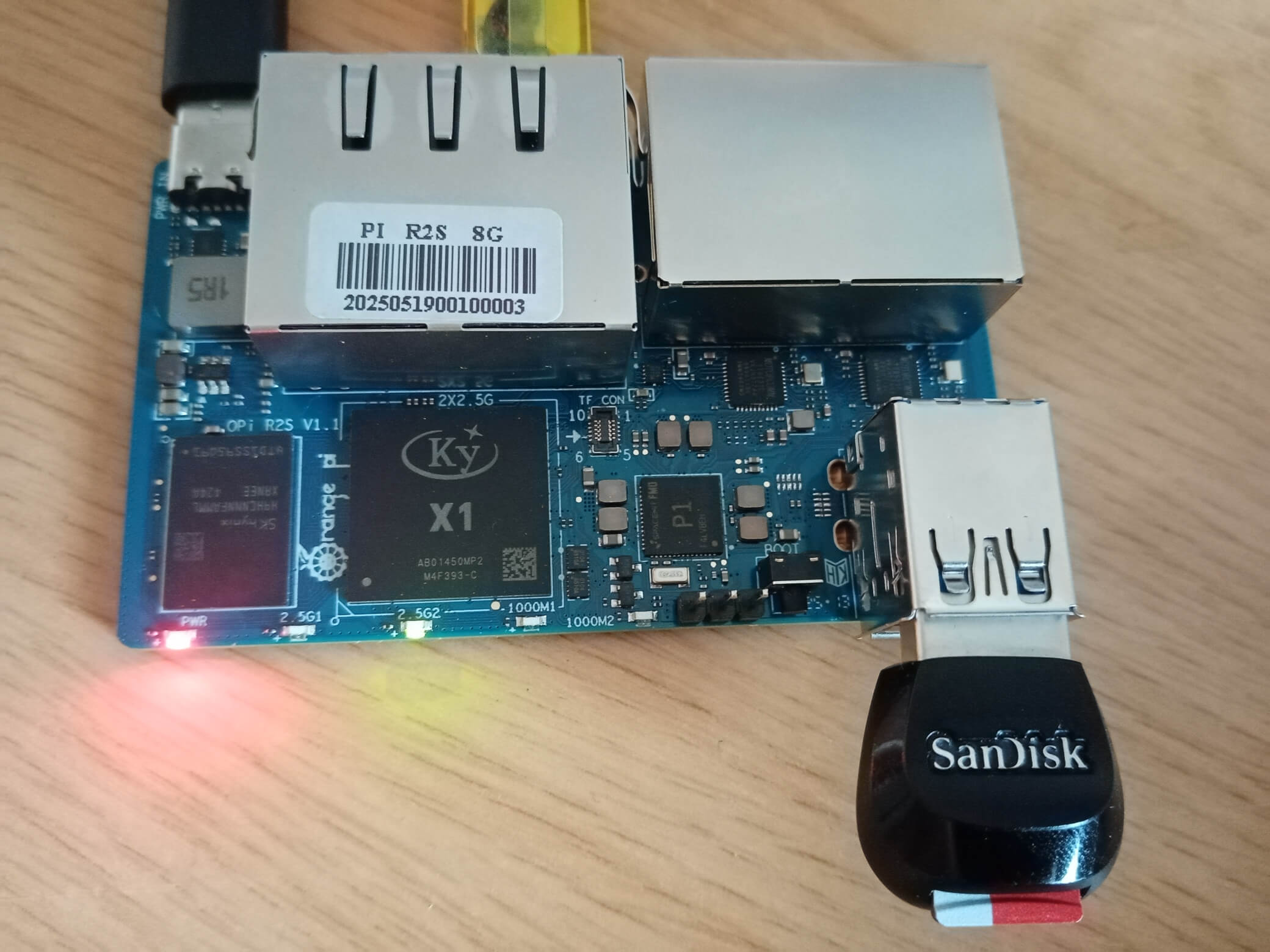
In this article I benchmark the Orange Pi R2S and compare it to other single board computers (both ARM and RISC-V) as well as an Intel N100 Mini PC. The tests are run using the Phoronix Test Suite. Orange Pi R2S supports OpenWrt, Ubuntu, and can be widely used in enterprise gateways, industrial control hosts, industrial automation, energy management, intelligent transportation, smart cities and other fields.
When viewing these benchmarks, it’s important to take into account the price points of each single board computer (SBC).
I’ll mainly focus on processor benchmarks for this article, but there are some other tests included.
Explanation of the legends used in the charts below:
RPI5 – Raspberry Pi 5 (ARM architecture)
OPi RV2 – Orange Pi RV2 (RISV-V architecture)
N100 – Intel N100 (x86_64 architecture)
OPi5 Max – Orange Pi 5 Max (ARM architecture)
OPi R2S – Orange Pi R2S (RISC-V architecture)
BPI-F3 – Banana Pi BPi-F3 (RISC-V architecture)
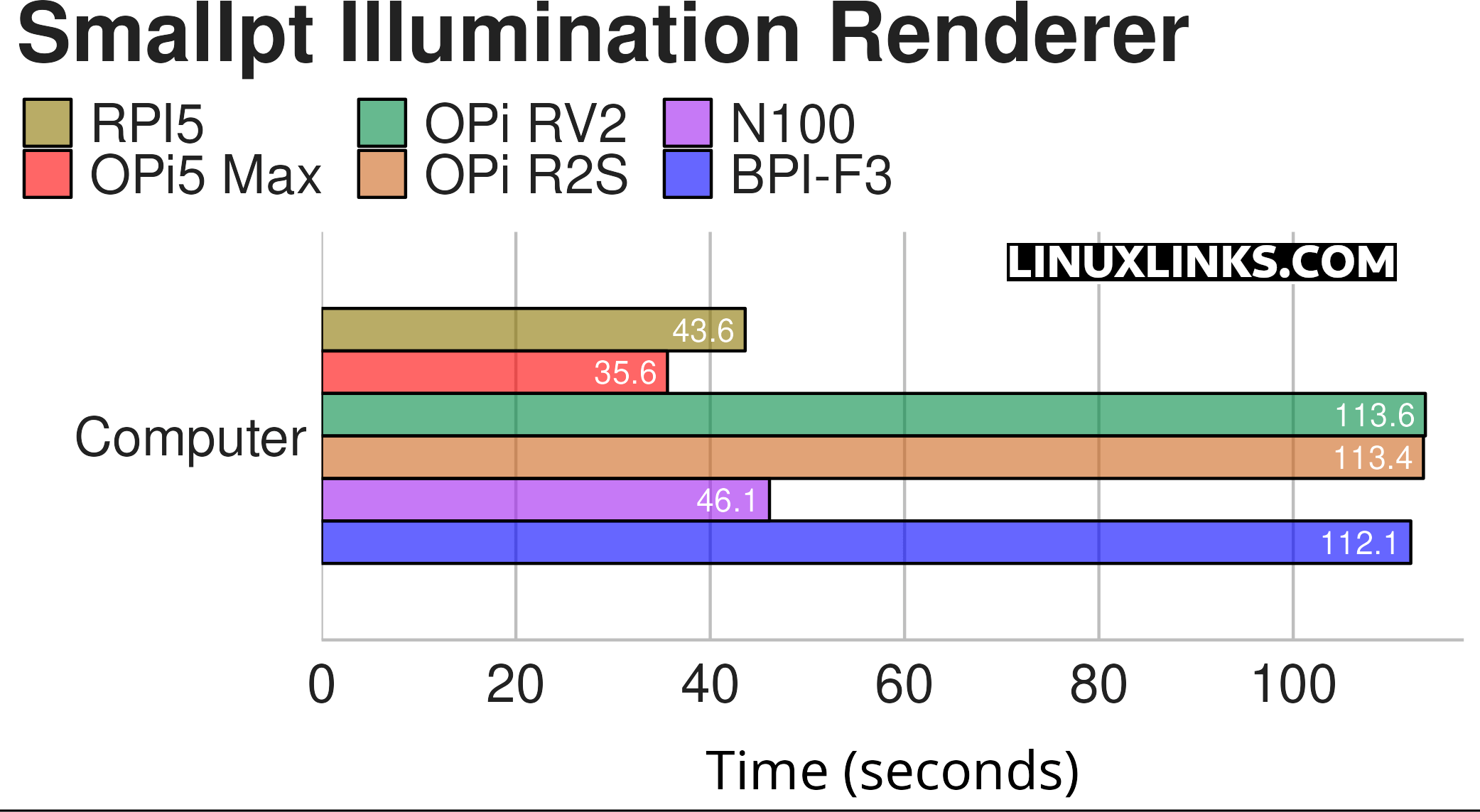
$ phoronix-test-suite benchmark smallpt
Smallpt is a C++ global illumination renderer written in less than 100 lines of code. Global illumination is done via unbiased Monte Carlo path tracing and there is multi-threading support via the OpenMP library.
With this benchmark, a shorter time indicates better performance.
The Orange Pi R2S’s performance is as expected. It has the same processor as the Orange Pi RV2 and the Banana Pi BPI-F3. It’s cheaper than the other boards.
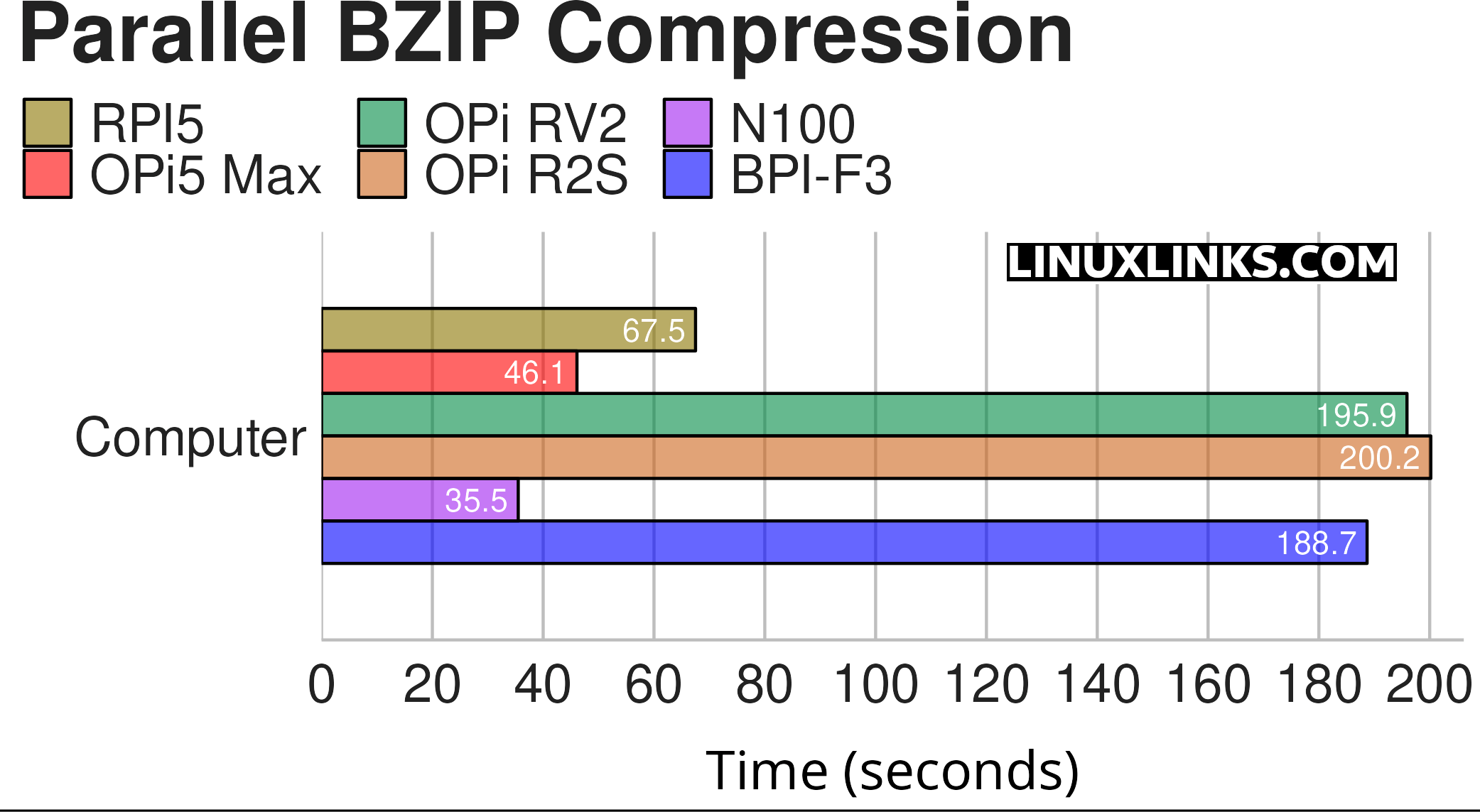
This test measures the time needed to compress a file (a .tar package of the Linux kernel source code) using BZIP2 compression.
With this benchmark, a shorter time indicates better performance. Again the RISC-V boards are not as performant as their ARM counterparts.
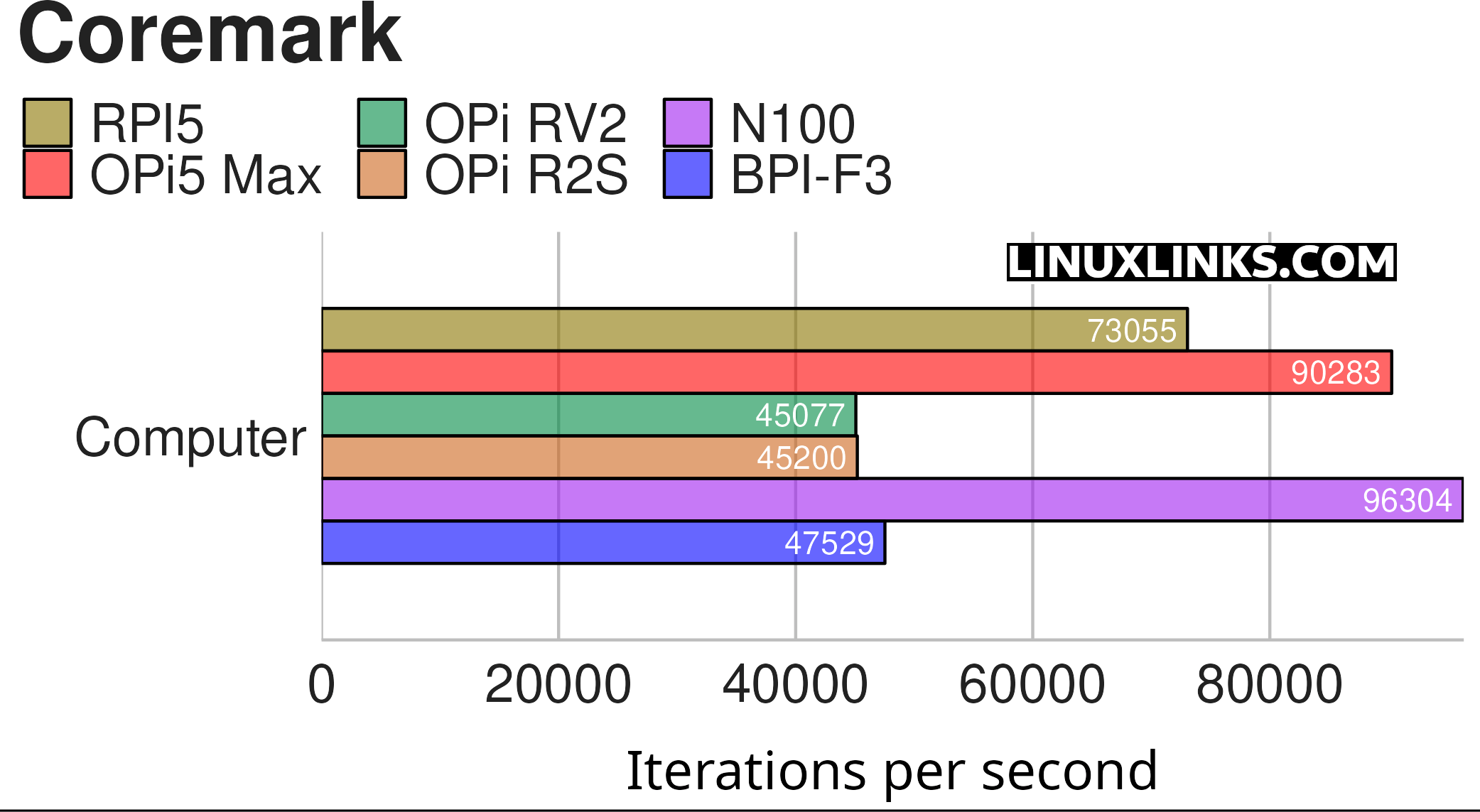
$ phoronix-test-suite benchmark coremark
Coremark is a benchmark that measures the performance of central processing units (CPU) used in embedded systems.
I’ve also run some additional benchmarks on the R2S.
$ phoronix-test-suite benchmark encode-opus
Opus is an open audio codec. Opus is a lossy audio compression format designed primarily for interactive real-time applications over the Internet. This test uses Opus-Tools and measures the time required to encode a WAV file to Opus five times.
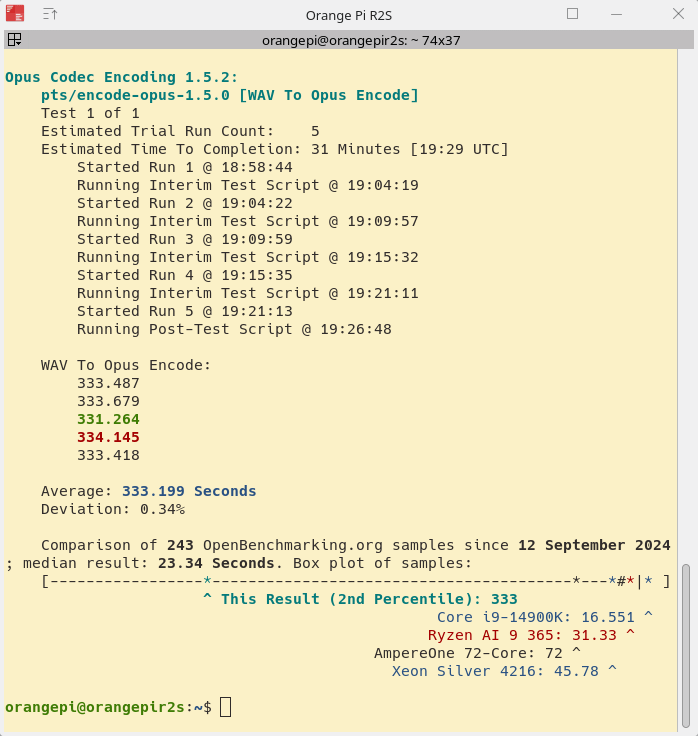
$ phoronix-test-suite benchmark openssl
OpenSSL is an open-source toolkit that implements SSL (Secure Sockets Layer) and TLS (Transport Layer Security) protocols. This test profile makes use of the built-in “openssl speed” benchmarking capabilities.
I’m only testing the RSA4096 algorithm.
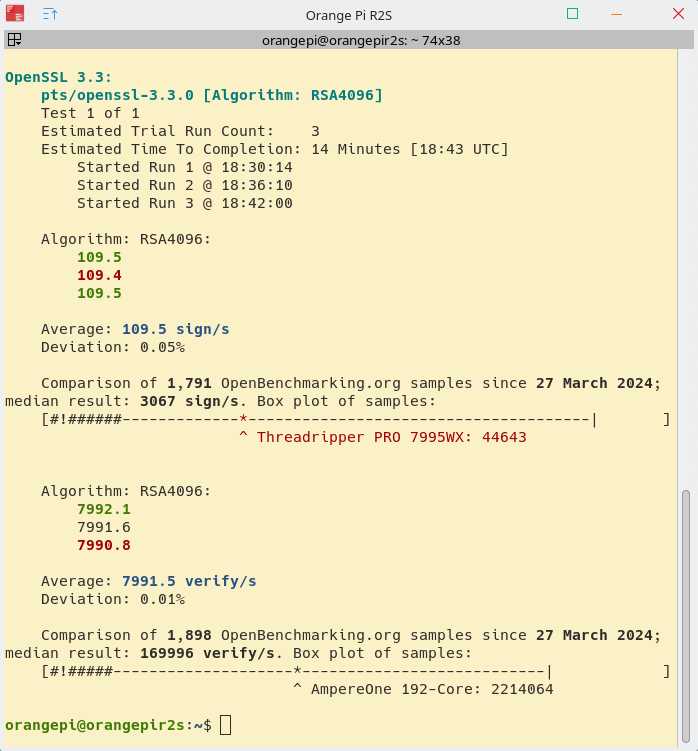
$ phoronix-test-suite benchmark compress-lz4
This test measures the time needed to compress/decompress a sample file (silesia archive) using LZ4 compression.
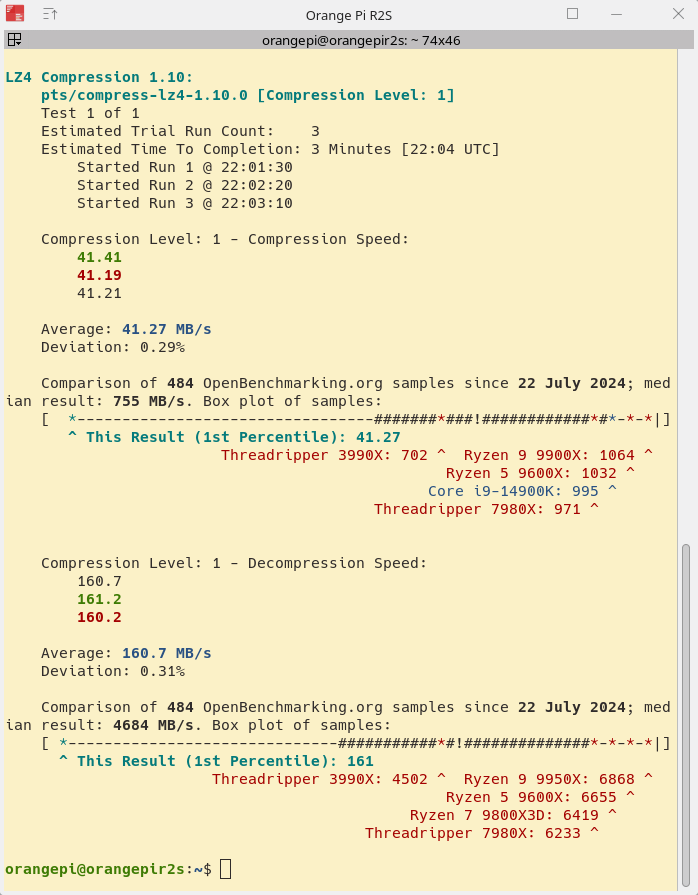
$ phoronix-test-suite benchmark tinymembench
This benchmark tests the system memory (RAM) performance.

If there are Phoronix benchmarks you’d like me run, drop a comment below. Please state exactly the name of the test(s) you’d like to see the results. Note some benchmarks are not currently supported on RISC-V.
All articles in the series:
| Orange Pi R2S | |
|---|---|
| Introduction | Introduction to the series and interrogation of the R2S |
| Benchmarks | Benchmarking the R2S Single Board Computer |
| Power | Comparing the R2S power consumption with other SBCs and Mini PCs |
